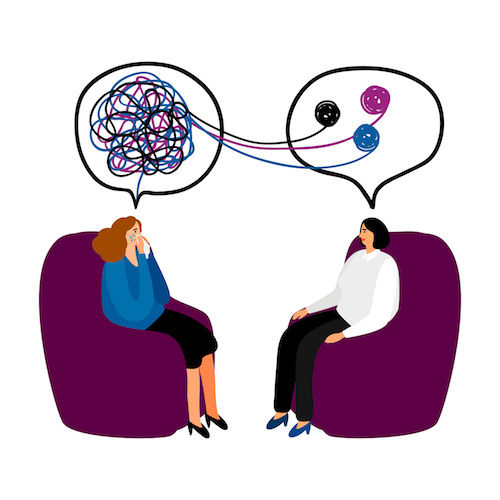What is Cognitive Behavioral Therapy?
- Carly Kyre

- Jul 29, 2020
- 2 min read
What is CBT?
Cognitive Behavioral Therapy- or CBT for short- is a relatively new form of evidence-based treatment for an array of mental health or emotional ailments. Developed by psychiatrist Aaron Beck in the late 1960’s, CBT has been adopted by mental health professionals for years as an effective form of therapy.

CBT works by helping people learn to identify and change their own destructive or disturbing thoughts that have a negative impact on emotions and behavior. It focuses on changing people's immediate negative emotions that may worsen their depression, anxiety, and emotional problems. Through CBT done with a therapist, these negative thoughts are identified, challenged, and replaced with more objective thoughts.
CBT vs Psychodynamic Psychotherapy
So what is the real difference between CBT and a more traditional Psychodynamic Psychotherapy? The biggest difference is the focus of CBT on addressing thoughts and feelings you have in the present, while psychodynamic therapy focuses on addressing past experiences and is more insight-based. Psychodynamic therapy also is a more long-term form of therapy, as opposed to CBT which usually has a set amount of sessions and has an ultimate end goal in mind.

CBT can also be a great resource because it often takes less time, therefore often making it more affordable. That’s because CBT is so goal-focused, so it is easier to determine an end-point for therapy. As opposed to psychodynamic therapy where you use therapy to build a relationship with your therapist and unravel your thoughts and emotions.
Different Types of CBT
There are different types of CBT that a therapist can utilize to best help their patients. A post from VeryWellMind.com best simply explains the different types.
Cognitive therapy centers on identifying and changing inaccurate or distorted thinking patterns, emotional responses, and behaviors.
Dialectical behavior therapy (DBT) addresses thoughts and behaviors while incorporating strategies such as emotional regulation and mindfulness.
Multimodal therapy suggests that psychological issues must be treated by addressing seven different but interconnected modalities, which are behavior, affect, sensation, imagery, cognition, interpersonal factors, and drug/biological considerations.4
Rational emotive behavior therapy (REBT) involves identifying irrational beliefs, actively challenging these beliefs, and finally learning to recognize and change these thought patterns.
What is Cognitive Behavioral Therapy Good For?
CBT can be used for the treatment of many different mental health issues, and can even be used to treat chronic pain. These issues include things such as:
Addictions
Anger issues
Anxiety
Bipolar disorder
Depression
Eating disorders
Panic attacks
Personality disorders
Phobias
Problems with stress
No wonder CBT is such a widely used form of treatment. It is a heavily evidence-based therapy, and the benefits can help all kinds of people with various needs.

What to Expect During Therapy
During therapy you are going to be expected to identify your own negative thoughts. Your therapist, in simple terms, is going to help you figure out what is happening inside of you when emotional problems arise. Becoming aware of these feelings is the first step to helping you change them.
You will also begin practicing the new skills you are going to use to replace your bad thoughts and emotions. Because CBT is so goal-oriented, setting these goals early on is another important step. This is what makes CBT such a structured process.





Comments